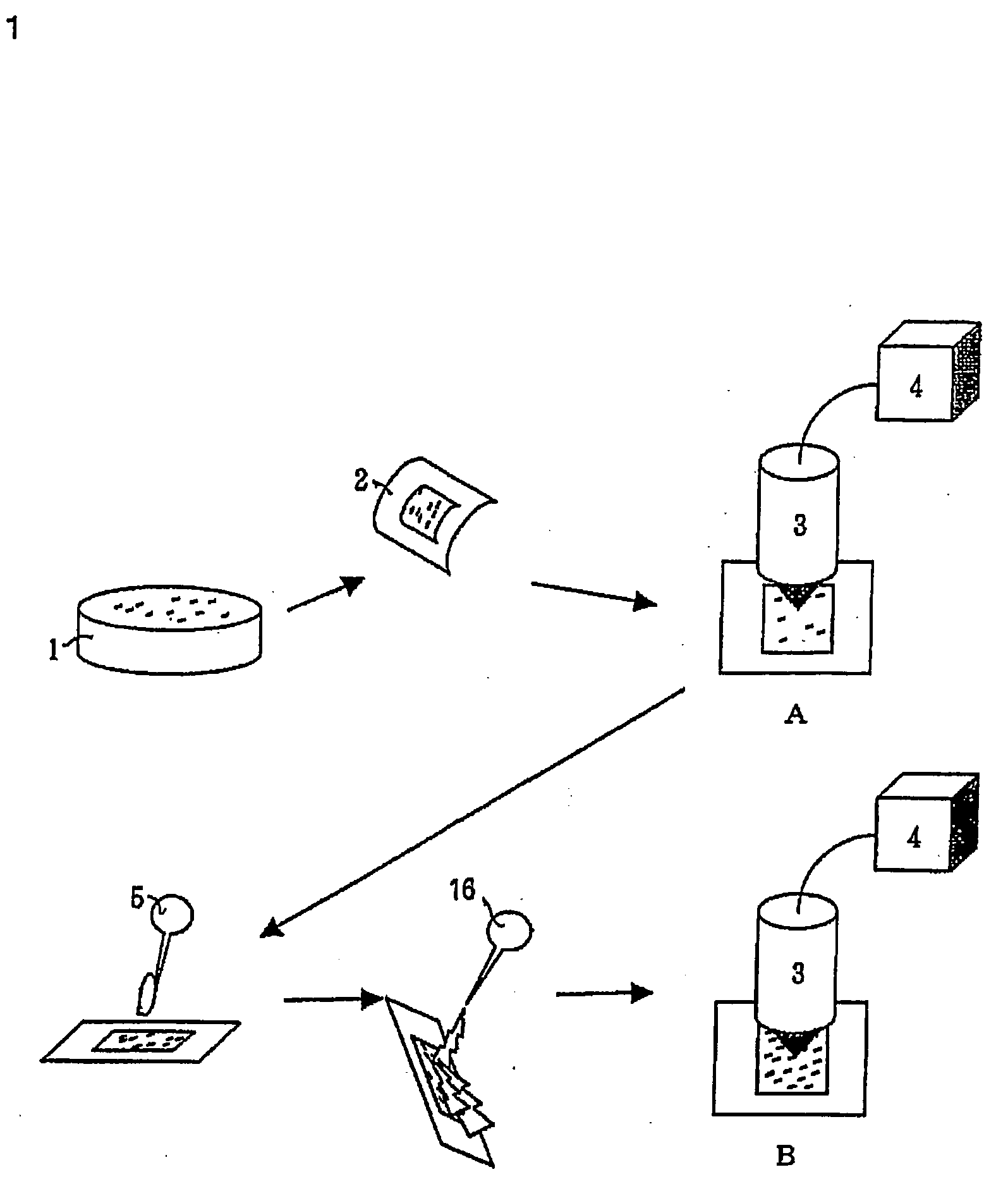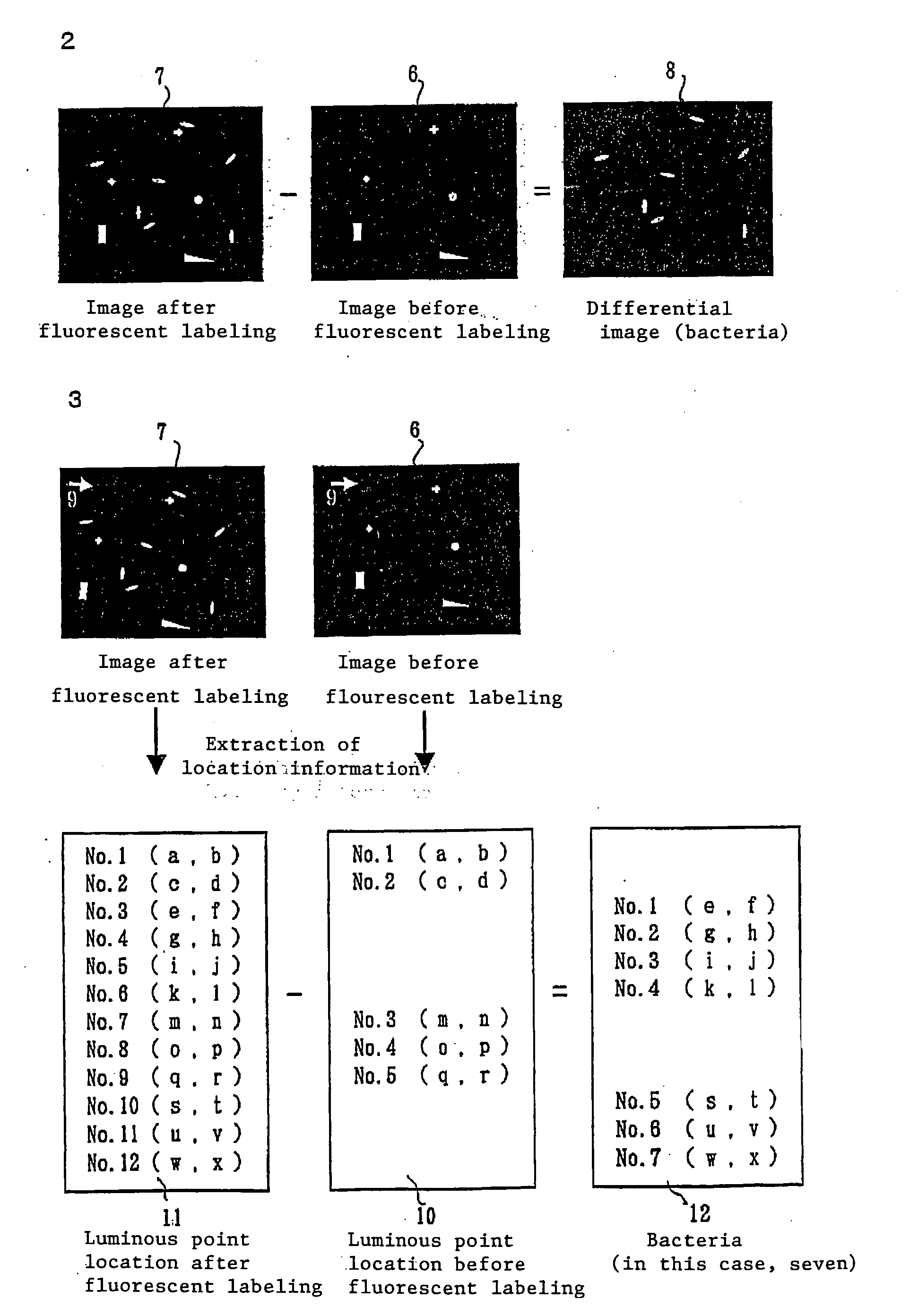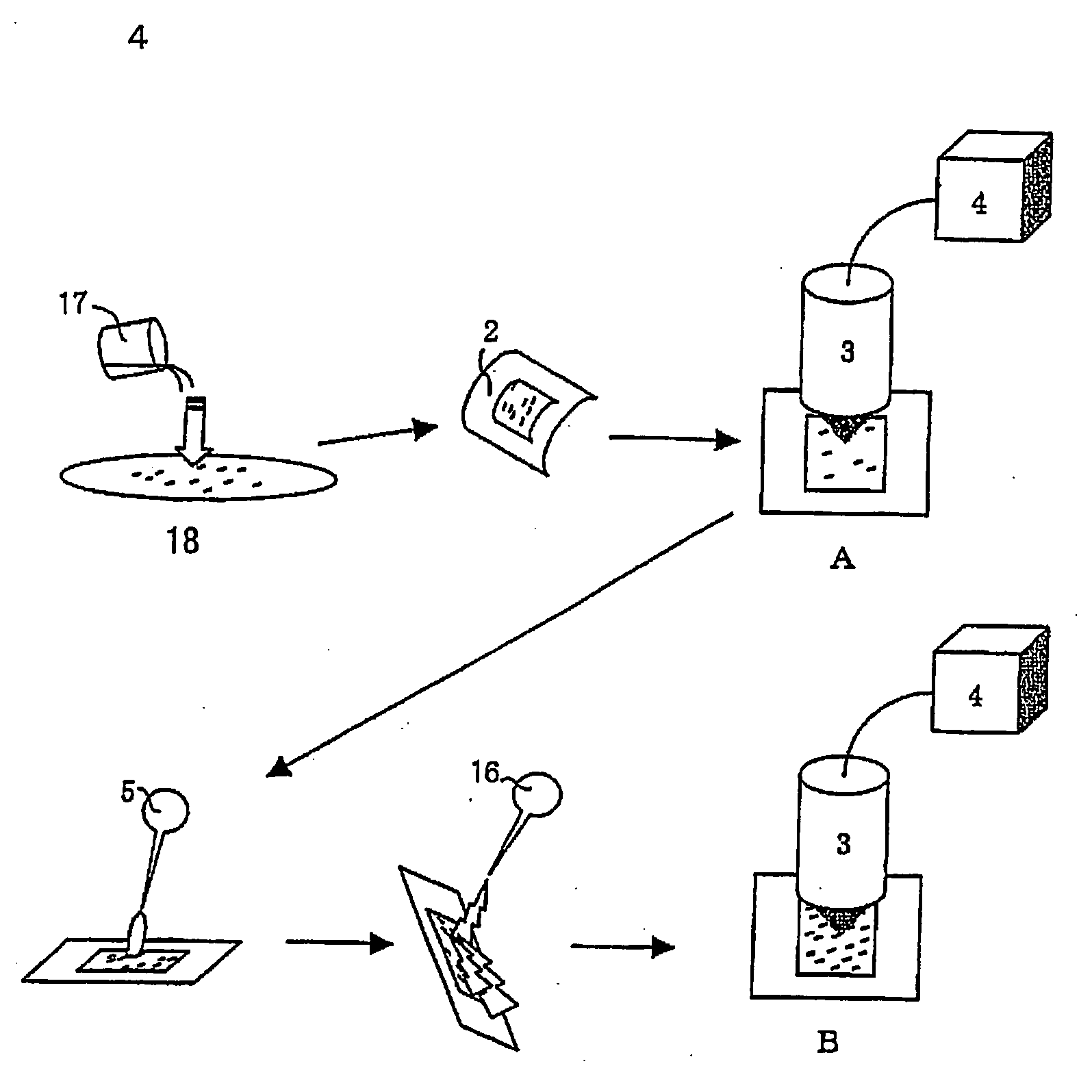Method of counting microorganisms or cells
a microorganism or cell technology, applied in the field of counting microorganisms or cells, can solve the problems of affecting the processing accuracy of the process, the difficulty of culture of many viable bacteria, and the inability to detect bacteria by a conventional culture method, etc., and achieve the effect of processing more accurately
- Summary
- Abstract
- Description
- Claims
- Application Information
AI Technical Summary
Benefits of technology
Problems solved by technology
Method used
Image
Examples
example 1
Method of Counting by Determining a Difference in the Number of Luminous Points
[0052] Referring to FIG. 1, the embodiment mainly according to claims 1, 5 and 6 will be described below. This embodiment relates to a method of counting the number of bacteria contained in a solid sample by utilizing a difference between luminous points in the first and second images.
[0053] First, a solid sample 1 containing bacteria and contaminants is captured on the above-mentioned adhesive sheet 2. If the adhesive sheet is not used, the bacteria are generally captured by wiping or stomaching to deploy them into sterilizaed water. The use of the adhesive sheet simplifies the sampling operation.
[0054] Then, a means for obtaining a fluorescent image 3 is used to obtain a fluorescent image (first image) of the sample on the adhesive sheet containing the bacteria. The obtained image is image-processed at an image and arithmetic processing unit 4 to determine fluorescent luminous points A in the image. ...
example 2
Method of Counting by Utilizing a Differential Image
[0068] Referring to FIG. 2, the embodiment according to claim 2 will be described below. This embodiment relates to a method of counting the number of bacteria by utilizing a differential image between the first and second images.
[0069] First, a sample containing the bacteria is captured on the above-mentioned adhesive sheet similar to embodiment 1. Next, a fluorescent image of the sample containing the bacteria (a first image 6 shown in a central part of FIG. 2) on the adhesive sheet is obtained. Then, a fluorescent labeling reagent is applied over the adhesive sheet to fluorescent-label the bacteria. After the fluorescent labeling reagent that is not taken to the bacteria is cleaned with a cleaning liquid, a fluorescent image of the sample (a second image 7 shown in a left part of FIG. 2) on the adhesive sheet is obtained. A differential image 8 shown in a right part of FIG. 2 is obtained from the second image 7 and the first i...
example 3
Method of Counting by Utilizing Location Information
[0078] Referring to FIG. 3, the embodiment according to claim 3 will be described below. This embodiment relates to a method of counting the number of bacteria by utilizing a location information of luminous points.
[0079] Similar to Examples 1 and 2, the sample containing the bacteria is captured on the above-mentioned adhesive sheet. Then, a fluorescent image (first image 6) of the sample containing the bacteria on the adhesive sheet is obtained. When the image is obtained, a reference point 9 (shown in the drawing as a white arrow) is used to find the location of the sample on the adhesive sheet and to recognize the location information 10 of the luminous points in the first image. A fluorescent labeling reagent is applied over the adhesive sheet to fluorescent-labeling the bacteria. Thereafter, a fluorescent image (second image 7) of the sample containing the bacteria on the adhesive sheet is obtained. Similar to the first ima...
PUM
| Property | Measurement | Unit |
|---|---|---|
| thickness | aaaaa | aaaaa |
| smoothness | aaaaa | aaaaa |
| thickness | aaaaa | aaaaa |
Abstract
Description
Claims
Application Information
 Login to View More
Login to View More - R&D
- Intellectual Property
- Life Sciences
- Materials
- Tech Scout
- Unparalleled Data Quality
- Higher Quality Content
- 60% Fewer Hallucinations
Browse by: Latest US Patents, China's latest patents, Technical Efficacy Thesaurus, Application Domain, Technology Topic, Popular Technical Reports.
© 2025 PatSnap. All rights reserved.Legal|Privacy policy|Modern Slavery Act Transparency Statement|Sitemap|About US| Contact US: help@patsnap.com



